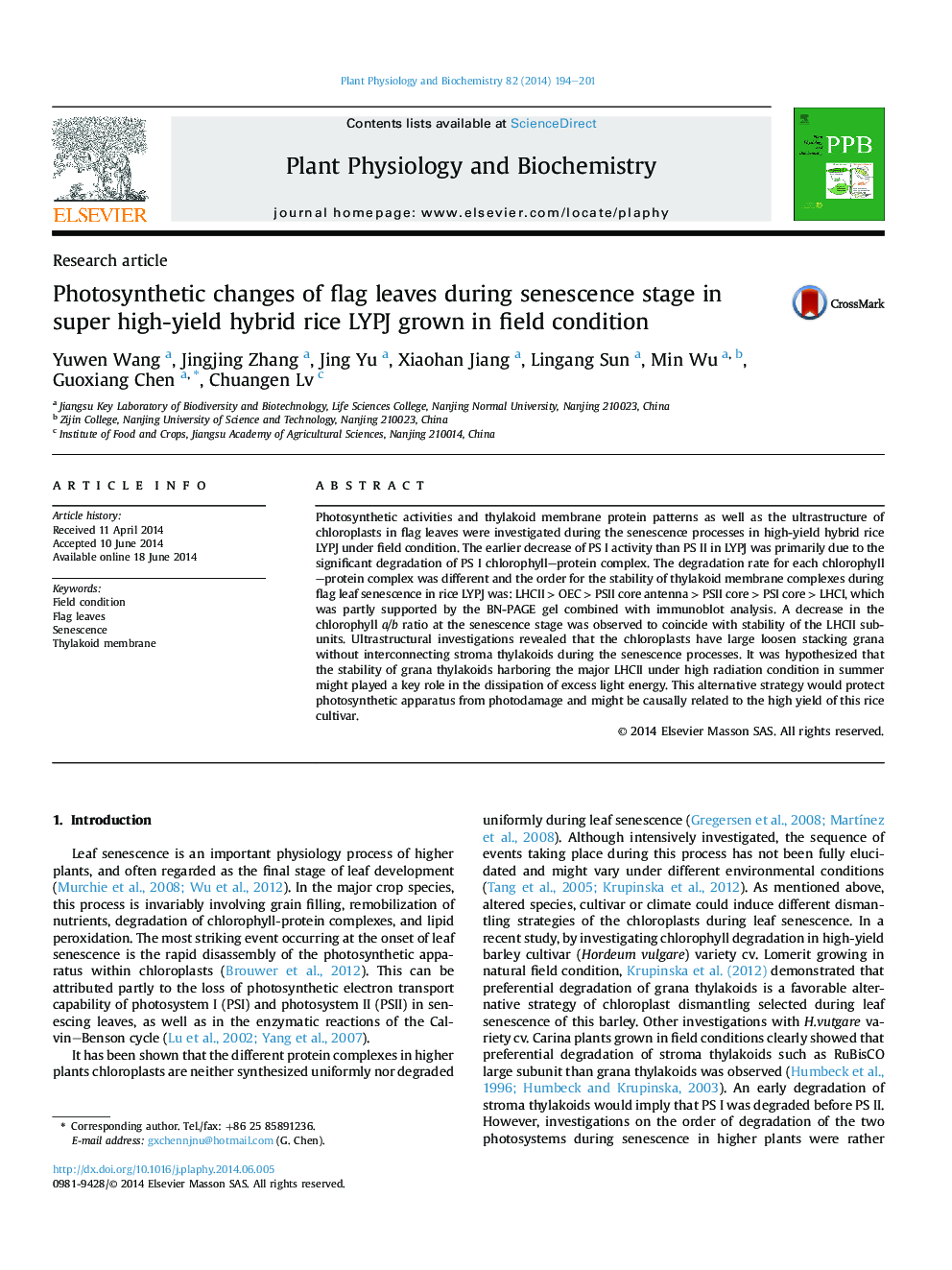| Article ID | Journal | Published Year | Pages | File Type |
|---|---|---|---|---|
| 2016101 | Plant Physiology and Biochemistry | 2014 | 8 Pages |
Abstract
Photosynthetic activities and thylakoid membrane protein patterns as well as the ultrastructure of chloroplasts in flag leaves were investigated during the senescence processes in high-yield hybrid rice LYPJ under field condition. The earlier decrease of PS I activity than PS II in LYPJ was primarily due to the significant degradation of PS I chlorophyll-protein complex. The degradation rate for each chlorophyll-protein complex was different and the order for the stability of thylakoid membrane complexes during flag leaf senescence in rice LYPJ was: LHCII > OEC > PSII core antenna > PSII core > PSI core > LHCI, which was partly supported by the BN-PAGE gel combined with immunoblot analysis. A decrease in the chlorophyll a/b ratio at the senescence stage was observed to coincide with stability of the LHCII subunits. Ultrastructural investigations revealed that the chloroplasts have large loosen stacking grana without interconnecting stroma thylakoids during the senescence processes. It was hypothesized that the stability of grana thylakoids harboring the major LHCII under high radiation condition in summer might played a key role in the dissipation of excess light energy. This alternative strategy would protect photosynthetic apparatus from photodamage and might be causally related to the high yield of this rice cultivar.
Related Topics
Life Sciences
Agricultural and Biological Sciences
Plant Science
Authors
Yuwen Wang, Jingjing Zhang, Jing Yu, Xiaohan Jiang, Lingang Sun, Min Wu, Guoxiang Chen, Chuangen Lv,
